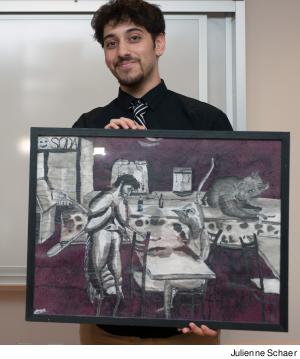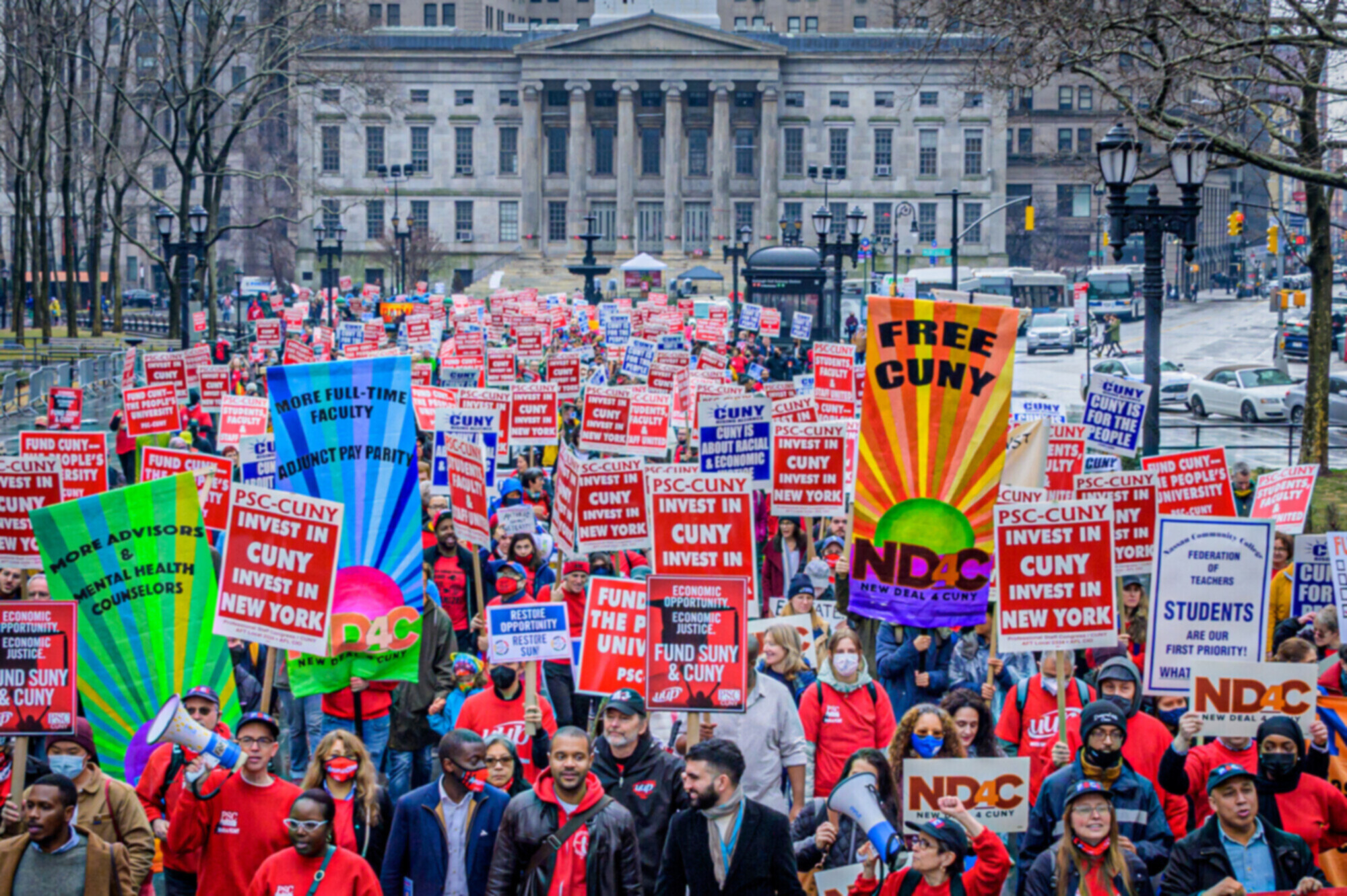For many working students at CUNY, the labor they do outside of college seems separate and apart from their academic studies. Labor Arts, an online cultural project about creative expression by unions and working people, aims to bridge that separation through its annual contest for CUNY undergraduates, “Making Work Visible.” The contest – which this year has a March 2 deadline – awards cash prizes of up to $1,000 in four categories: essays, poetry, narrative and visual arts.
 |
To have a labor arts contest at CUNY, where so many students work while attending college, seems like a “natural” fit to Evelyn Jones Rich, a founder of Labor Arts and an activist in the PSC Retirees Chapter. “We want students to have an understanding of the unique contributions that working people have given to this country,” Rich told Clarion. “I’m talking about the eight-hour day, the 40-hour week.” Those gains were won, Labor Arts emphasizes, by workers who insisted that the value of their jobs and their lives be recognized.
Writing About Work
For years, City Tech English professor Jane Mushabac has asked her students to write about the work that they do – and since the Labor Arts contest began five years ago, she’s been encouraging them to enter.
“It’s a rich source of detail, emotion and meaning,” Mushabac told Clarion. “It’s always an exciting essay to assign and then to read.”
Mushabac tells students that she doesn’t want a piece about “my first job,” but something that details the work they do – whether it’s taking care of a diabetic uncle or working in a high-energy children’s gym. Focusing on “the where” and “the how,” she guides her students in writing their first essay of the semester.
Mushabac gives students a worksheet to brainstorm details before composing their essay, and she shares other writing about work, including a former student’s essay about working at a Mexican deli and grocery in the Bronx. The little details, like tape peeling from the store’s sign that’s colored like a Mexican flag, and busy Sundays when customers are waiting outside before the store opens, give students inspiration for their own essays.
A Visual Archive
The Labor Arts website is an online archive that’s primarily visual, and its CUNY student contest links visual and written expression. “Students submitting written work must include an image that is related to the themes in their writing,” the contest rules explain, while those submitting visual artwork must also submit a paragraph discussing their work.
Rachel Bernstein, a founder of Labor Arts who works on public history projects with the Wagner Labor Archives at NYU, says the contest helps promote “visual literacy” and reflection on “how images convey meaning.” For an image to accompany written entries, students can search through the photos, posters, paintings, illustrations and cartoons in the Labor Arts digital archive, or they can submit an image of their own.
Recent winning entries include a student’s poem about a worker who arrives before everyone else, “even before the sun,” paired with a painting of a tired waitress in a harshly lit, empty café. Another, a student’s painting of a coffee-shop waiter with slouched shoulders and many hands, hemmed in by large, menacing animals, is accompanied by his thoughts on growing up in the projects and being assumed by others to be uneducated or a thief. A short story about a bagel cart worker contrasts the regular customers who share confidences about their families with the anonymous crowd at the morning rush: “I cannot tell most of them apart….They are always hurrying and gazing into their phones or their watches as if they were looking at their future in magic crystal balls.”
Associate English professor Carole Harris had her first-year composition students enter the contest for the first time last year, and two of them won awards. Harris, who had students workshop their writing, said students learn how it feels to “share your work in public venues.”
Creative Work
In her class, students went through at least two drafts of their stories. “Think of it as a process,” she tells them. In the end, “you have an excellent piece that you’ve honed.” As Harris gives advice, like “start from paragraph four,” she learns about some of her students’ writing techniques, like nailing a conversational tone by writing a draft on the phone.
Harris says that for some students who have struggled with writing, the subject can resonate. “They are writing as experts on their work experience,” she told Clarion. “There is a command of the topic.”
Last year, Harris’s student Malessa Henry won second place for a story that she wrote about taking care of her 14-month-old child and working as a home health aide to a fellow church member paralyzed from the neck down. Henry had known “Brother T,” as she calls him, when he was still able to dazzle listeners as he played piano or guitar; today he needs her help to turn his neck, to help avoid the excruciating pain that arrives if he remains in one position for too long.
Prize Money
“Sometimes in life, we think that the simplest things have no meaning,” Henry told Clarion, reflecting on her story and how the contest helped her value the work she does. “I think taking care of Brother T is not a small thing.”
Henry was elated when she found out that she won second place and with it a $500 prize, but she had to read the email “10 times” before the win really sank in.
“I wanted to go on a shopping spree,” Henry said. She’s a single mother who lives with her sister and mother. “But I realized school is more important.”
Contest organizers are now working on getting the word out across the University, with posters and outreach to chairs and coordinators of writing programs. Joseph Entin, chair of Brooklyn College’s American Studies Program and a coordinator of this year’s contest, says that every semester he asks his students how many are working while in school; every semester, most of them are. Entin says that students’ work experience shapes them, and can inform their studies.
“We’re a public university, a union university, a working-class university,” Entin told Clarion. For all those reasons, he says, the Labor Arts contest is “a perfect fit for CUNY.”
For more information, visit Labor Arts’ website or email Joseph Entin.

